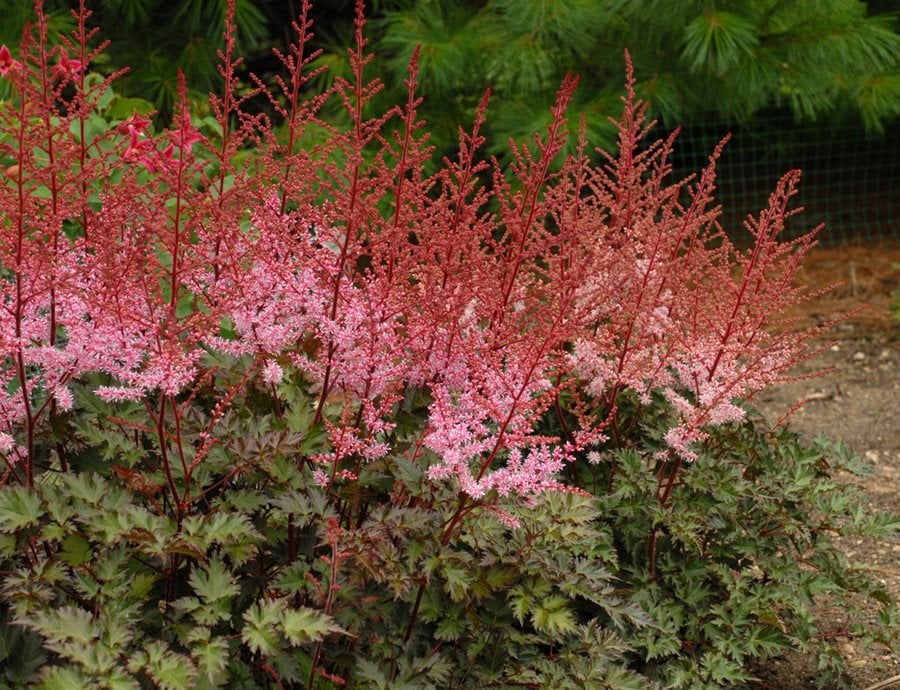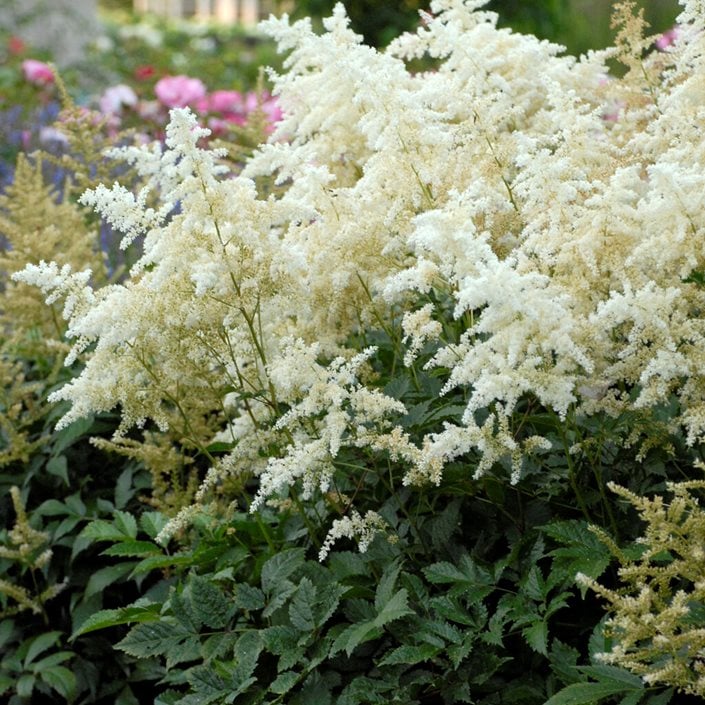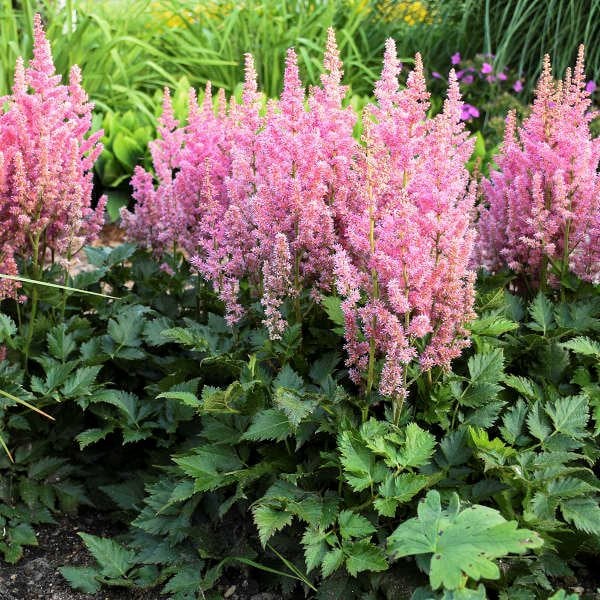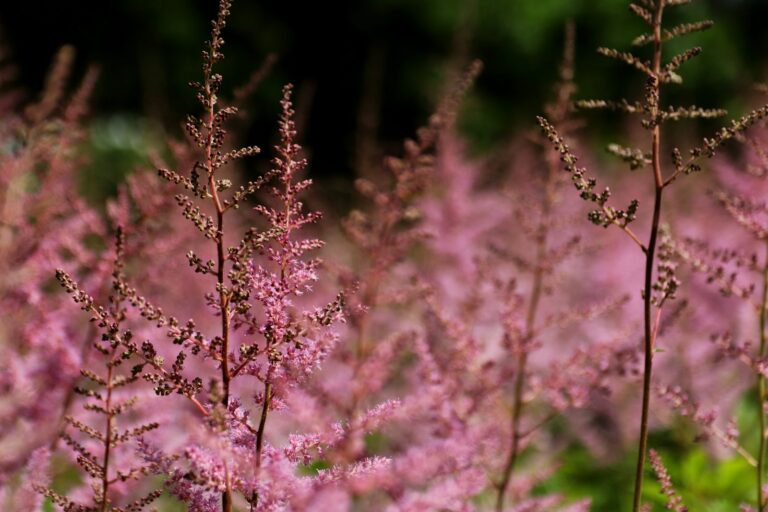Extending Astilbe Bloom Time: Succession Planting Strategies
Your astilbe garden produces blooms for three weeks in early summer while neighboring shade gardens maintain continuous color for twelve weeks. The difference lies in succession planting strategy that combines early-season varieties blooming in May with late-season selections flowering through August[1][2]. Here is how to extend your astilbe display from spring through late summer.

Understanding Natural Bloom Periods
To prolong the astilbe bloom season, it is important that you understand when different astilbe varieties bloom naturally. The early-season type of astilbe blooms late May to early June, mid-season types from mid-June to early July, and late-season types extend colors into late July and August[3]. Such an organic sequence opens up designs and plantings for blooms over a duration of three to four months as opposed to when they explode in a single clustered burst.
Selecting Varieties by Bloom Season
Succession planting begins with the selection of varieties from the respective bloom period classes. At a time when most shade gardens tend to be colourless, early-season astilbes such as Astilbe chinensis ‘Visions in Pink’ and Astilbe japonica ‘Deutschland’ set up the initial flowering display[3]. Usually they have a two to three week flowering phase marking the first plume of the garden.

Mid-season variants Astilbe arendsii ‘Fanal’ and Astilbe thunbergii ‘Ostrich Plume’ are present in succession closely after and show up in the peak summer[4]. In the later reaches of the season, selections such as Astilbe chinensis var. taquetii ‘Superba’ and Astilbe chinensis ‘Pumila’ finish the trend, appearing in the colors well into August when many perennial flowers have completed blooming[3].

Optimizing Plant Spacing for Visual Impact
The density of the plant is at once a visual concept as well as an operational success factor of succession plans. So this spacing is eighteen to twenty-four inches between the plants to provide each number a space to achieve its maturity, without clogging[5]. A closer spacing results in a fuller appearance quicker but it will require division sooner, as plants compete for resources.
Group at least three plants of each variety together, rather than putting individual specimens scattered within the bed.
This clustering method helps ensure that an individual bloom period of no-diversity has clear color contrast, with no scatter of flowers which might not appear in scenery.
Planting Timing for Synchronized Maturity
The timing of planting also affects when succession planted astilbes come into optimal performance. Spring planted astilbes develop root systems to last throughout the summer and form a bit of modest blossoms in their first season before achieving full flowering potential in their second season[5].
These fall plants typically prefer cool soil temperatures that support root development while keeping weight light, and often produce a more vigorous first-year bloom a year later with a lower number of leaves and flowers under stress. Suitable for gardeners using succession planting, placing all varieties in the same season results in mutual maturity, so each period of bloom will have completed in a parallel period of intensity during that same 2 years.
Leveraging Microclimates to Extend Bloom Windows
The garden is a microclimate, which means that the bloom timing is manipulated based on some of the changes that can either support or disturb succession planning. Astilbes put in sun-drenched conditions of brighter conditions with morning sun bloom about one week earlier than those in deeper shade[6].

This natural variation permits the placement of items to extend the bloom window, allowing early varieties to be in shadier areas to stall their blooming, and mid-season varieties to pop up in bright areas to advance their bloom time. This leads to overlapping blooms instead of separate times in which the flowers are produced.
Moreover, astilbes grown near water bodies or in uniformly moist low-lying locations tend to bloom longer than those grown in regions where soil dries between waterings[5].
Managing Soil Moisture for Maximum Bloom Duration
Each and every astilbe variety experiences bloom duration in direct correlation with soil moisture management. Flowering plants subjected to water stress produce smaller plumes which fade rapidly and lose florets more quickly[5]. Having constant moisture throughout bloom makes flowering fresh, so flowers can bloom longer, and overlapping between varieties can be maximized.
Utilize two to three inches of organic mulch around plants to help moderate soil temperature and preserve moisture at the time of critical flowering. Water deeply to provide about one to one and a half inches per week from the top soil when its top inch is dry due to natural or supplemental rain[5].
Deadheading Strategies for Succession Plantings
In astilbes, deadheading spent blooms does not cause a re-blooming process similar to some others, and while some perennial plants do this it does not cause a bloom again in a succession planting. The removal of faded blooms saves energy from seed production and shifts focus to roots and foliage health, ensuring that better blooms come next season[2].

For gardeners interested simply in prolonging the current season display, spent plumes from early varieties can hang on plants as later varieties crowd out the colors in the show. The dried flower heads add some textural interest and, once individual florets drop out of an array, vertical structure. But the removal of early-season spent blooms enhances the visual interest on mid and late-season varieties as they hit peak annual flowering.
Fertilization Timing for Bloom Quality
The timing of fertilization affects both bloom size and success of succession displays. In the early spring when new growth is evident, applying a balanced slow-release fertilizer allows for the introduction of nutrients necessary for flower bud growth in all varieties[5].
Throughout the growing season, avoid high-nitrogen fertilizers as the excessive nitrogen promotes excessive foliage which results in lost flower production. An additional use of light fertilizer at the end stage of early varieties can help mid and late-season types with their flowering, while excessive fertilization may limit the overall bloom quality in astilbes adapted to moderate soil fertility.
Winter Protection for Reliable Spring Emergence
Winter mulching adds protection of crowns and guarantees consistent initial spring emergence in succession plantings of all types. Leave two to four inches of loose mulch (like shredded leaves or straw) after the ground freezes in late fall, especially for late-season ones that may be less cold-resistant than spring-blooming varieties[5].
Eliminate any excess winter mulch in early spring as it is warm and new shoots are starting to emerge. Frost heaving is prevented if this protection occurs and shallow roots are not cut off, which will impact the performance and flowering quality of all varieties in the succession plan.
Division and Maintenance for Long-Term Vigor
Dividing astilbe clumps of established forms preserves vigor and bloom quality and is critical to successful succession displays. Division of plants usually occurs every three to four years (when the center of the clump is woody and doesn’t produce as many blooms)[2] and thus plants usually benefit more from dividing.

Divide either in early spring when new growth is shown or fall once it has formed, reducing the crown into sections between 3-5 eyes. Re-planting divisions at correct spacing renews the succession planting and gives you the possibility to move variety positions depending on which timing of bloom pattern occurs in your garden, at different times of the year.
Integrating Complementary Perennials
Combining astilbes with complementary perennials also fills any remaining gaps that need to be filled during the long bloom. The early spring bulbs (think daffodils) and late-blooming hostas add color before and after astilbe succession, creating a shade garden that retains interest for five to six months.
Ferns add foliage texture during the season, but do not compete visually during the time of year when astilbe blossoms. Strategic companion planting creates a multi-level scheme in which extending astilbe bloom season is arranged in succession and is part of a cohesive seasonal approach, not the only thing focused on, or limited area within the area for your planting.

Key Practices for Extended Bloom Success
Essential succession planting elements:
- Select varieties from all three bloom periods (early, mid, late)
- Space plants 18-24 inches apart in clusters of three or more
- Plant all varieties in the same season for synchronized maturity
- Position early varieties in shade, mid-season in brighter locations
- Maintain consistent soil moisture throughout flowering periods
- Apply 2-3 inches of organic mulch around plants
- Water deeply 1-1.5 inches per week during bloom
- Fertilize in early spring with balanced slow-release formula
- Divide clumps every 3-4 years to maintain vigor
- Remove spent early blooms to shift focus to later varieties
- Add 2-4 inches winter mulch after ground freezes

Achieving Continuous Seasonal Color
In the process of careful variety selection and thorough cultural care, you shift your shade garden from having three weeks of color to three months of constant blooms. Success calls for early, mid and late season astilbes that are adapted to fit in with the weather and site conditions, sustained moisture through each period of flowering and proper spacing to ensure that the plants are spaced in space to maintain adequate health.
The result provides consistent seasonal color comparable to many traditional sun perennial borders and can perform well in difficult shade conditions where very few other flowering plants are guaranteed to be consistent performers.
Key Sources:
[1] Astilbe – Gardenia
[2] Astilbe – Proven Winners
[3] Astilbe Production – Penn State Extension
[4] Astilbe arendsii – Missouri Botanical Garden
[5] Growing Astilbe – Royal Horticultural Society
[6] Astilbe Growing Guide – Gardener’s Supply Company
Lily Morgan is a home gardener. She grows houseplants and designs small-space gardens. She shares what she learns from experience. Lily offers simple, practical tips for plant lovers. Her goal is to help others garden with confidence. She wants to help them grow, one leaf at a time.


